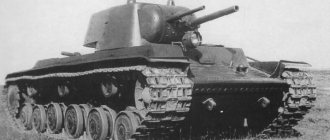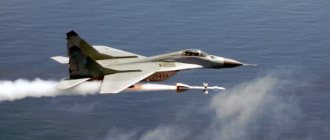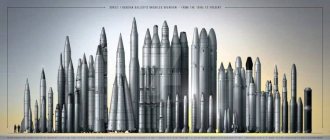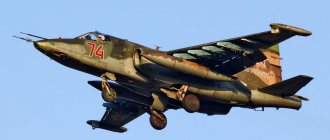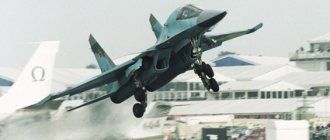"Packet-NK": Shooting enemy submarines and torpedoes from eight barrels
The American publication The National Interest, conducting an audit of modern Russian weapons, claims that soon all corvettes of Project 20380 (the flagship is Steregushchiy) will be reliably protected from torpedo attacks carried out by both surface ships and submarines. Moreover, they will pose a very serious threat to NATO submarines.
This quality will be provided to the corvettes, of which there should be 13 at the beginning of the next decade, by equipping the ships with the Paket-NK anti-submarine-anti-torpedo complex. Such a universal weapon, designed to combat two enemy ships secretly creeping under water, according to NI, has no analogues in the world.
It must be said that even before the Package-NK, a universal complex was also used on ships of the USSR Navy. Still in use today. This is a rocket launcher (torpedoes are used in the “Package”) RBU-1200. It fires ten barrels of bombs, which should (more precisely, can) hit a submarine at a depth of 600 meters. That is, hunting is carried out without homing ammunition. To combat torpedoes, two types of rockets are used. Some create a false acoustic signal identical to the noise of the ship's propellers, thereby leading the homing torpedo away from the target. Shells of another type form a minefield in the path of the torpedo. The firing range of the RBU-1200 is 3000 meters.
Development
The overall development of the complex was carried out at OJSC State Research and Production Enterprise "Region". Torpedo (MTT) is a joint development of OJSC SNPP Region and OJSC Scientific Research Institute of Morteplotekhniki, part of the Gidropribor concern. Anti-torpedo developed by State Research and Production Enterprise "Region"[1].
Tests of the complex with a launcher took place on the corvette Project 20380 “Steregushchy”[1]. Upon completion of testing, it was adopted by the Russian Navy in 2008.
The M-15 anti-torpedo of the Package-E/NK complex was first shown at the IMDS-2007 exhibition. The MTT torpedo of the Package complex was shown at the IMDS-2009 maritime show in St. Petersburg.
Excerpt characterizing Packet-NK
Everything parted, and the sovereign, smiling and leading the mistress of the house by the hand, walked out of the living room door. Behind him came the owner with M.A. Naryshkina, then envoys, ministers, various generals, whom Peronskaya kept calling. More than half of the ladies had gentlemen and were going or preparing to go to Polskaya. Natasha felt that she remained with her mother and Sonya among the minority of ladies who were pushed to the wall and not taken in Polskaya. She stood with her slender arms hanging down, and with her slightly defined chest rising steadily, holding her breath, her shining, frightened eyes looked ahead of her, with an expression of readiness for the greatest joy and the greatest sorrow. She was not interested in either the sovereign or all the important persons to whom Peronskaya pointed out - she had one thought: “is it really possible that no one will come up to me, will I really not dance among the first, will all these men who are now not notice me?” It seems that they don’t even see me, and if they look at me, they look with such an expression as if they were saying: Ah! it's not her, there's nothing to watch. No, this cannot be! - she thought. “They should know how much I want to dance, how great I am at dancing, and how much fun it will be for them to dance with me.” The sounds of the Polish, which continued for quite a long time, were already beginning to sound sad - a memory in Natasha’s ears. She wanted to cry. Peronskaya moved away from them. The Count was at the other end of the hall, the Countess, Sonya and she stood alone as if in a forest in this alien crowd, uninteresting and unnecessary to anyone. Prince Andrey walked past them with some lady, obviously not recognizing them. Handsome Anatole, smiling, said something to the lady he was leading, and looked at Natasha’s face with the same look as one looks at the walls. Boris walked past them twice and turned away each time. Berg and his wife, who were not dancing, approached them. Natasha found this family bonding here at the ball offensive, as if there was no other place for family conversations except at the ball. She did not listen or look at Vera, who was telling her something about her green dress. Finally, the sovereign stopped next to his last lady (he was dancing with three), the music stopped; the preoccupied adjutant ran towards the Rostovs, asking them to step aside somewhere else, although they were standing against the wall, and the distinct, cautious and fascinatingly measured sounds of a waltz were heard from the choir. The Emperor looked at the audience with a smile. A minute passed and no one had started yet. The adjutant manager approached Countess Bezukhova and invited her. She raised her hand, smiling, and placed it, without looking at him, on the adjutant’s shoulder. The adjutant manager, a master of his craft, confidently, slowly and measuredly, hugging his lady tightly, set off with her first on a glide path, along the edge of the circle, at the corner of the hall, he picked up her left hand, turned it, and because of the ever-accelerating sounds of the music, only measured ones were heard the clicks of the spurs of the adjutant’s quick and dexterous legs, and every three beats at the turn, his lady’s fluttering velvet dress seemed to flare up. Natasha looked at them and was ready to cry that it was not she who was dancing this first round of the waltz.
Complex
In automatic mode, the Package-NK complex detects, tracks, classifies, determines the parameters of target movement, and based on these data gives target designation for the use of ATE and (or) MTT. Then he gives pre-launch preparation, enters firing data and launches combat modules.
The Packet-NK complex includes:
- Launcher SM-588
- Control system "Package-E"
- GAS target designation "Packet-AE"
- Combat module (MTT and M-15)
Dagdiesel's dash
Particularly noteworthy are the positive changes taking place at JSC “, where promising models of weapons and aircraft are being developed. The company, as you know, has been going through hard times in recent years. However, after being included in the corporation at the suggestion of General Director Boris Obnosov, the situation immediately changed for the better. Modernization is in full swing and is planned to be completed by the end of 2022. At Gidroaviasalon-2018, First Deputy General Director of KTRV Vladimir Yarmolyuk said that there were no disruptions to work at the plant. One of the leading buildings has been completely reconstructed, equipment has been delivered, the plant is preparing for mass production of a new product, which will be obtained as a result of the completed development work. We are talking about the development of a promising torpedo, the serial production of which “will be launched this year.” Let us add that by 2023, Dagdizel should produce several dozen torpedoes (UET-1) for the Russian Navy. The total investment in its technical re-equipment will be about two billion rubles.
As we can see, work to create new models and improve guided weapon systems in the interests of the Aerospace Forces and the Russian Navy by the Tactical Missile Weapons Corporation is constantly carried out based on the requirements of ensuring the country's security, taking into account global trends in the development of means of armed warfare. State Defense Orders and State Provisions are being carried out confidently. The completion of the “Gidroaviasalon-2018” once again clearly confirmed this.
Oleg Falichev
Published in the newspaper “Military-Industrial Courier” in issue No. 36 (749) for September 18, 2022
Year of the new torpedo
In addition to these new products, the parent enterprise of the association, JSC TRV Corporation, presented the already well-proven, modernized anti-ship missiles Kh-31AD and Kh-35UE (aviation and ship versions), as well as the anti-radar Kh-31PD. They received improved speed performance, range of use and warhead power. And the multi-purpose Kh-38MLE can be equipped with combined guidance systems, including satellite navigation, and equipped with various types of warheads.
Air-to-air missiles on the external sling of a combat aircraft
Among the products of JSC GosMKB Raduga (part of KTRV) there was a product of the latest development - the X-59MK extended-range air-to-surface missile.
The missile is equipped with an active radar homing head ARGS-59E and is designed to destroy a wide range of radar-contrast surface targets from a boat to a cruiser at any time of the day, both in simple and difficult weather conditions, from Su-30MK and Su-35 carrier aircraft. when the sea state is up to six points. Launch range – up to 285 kilometers. The rocket's navigation system provides planning of its flight route with the introduction of up to four turning points.
The upgraded version of the Kh-59MK is equipped with a double-action warhead and is designed to destroy both sea and ground-based, highly durable objects with coordinates known before launch. The probable deviation when hitting a given target does not exceed 10 meters.
TRV Corporation JSC also showed missile systems at the exhibition. Created on the basis of the Kh-35E (3M-24E) anti-ship missile system, the Uran-E anti-ship missile system and the Bal-E anti-ship missile system have undergone extensive practical testing in various conditions. Taking into account the experience gained, work is currently underway to expand the combat capabilities of these missile systems using the new X-35UE anti-ship missile system.
In addition to tactical-class anti-ship systems, KTRV offers customers ship-based and coastal operational-tactical class systems based on the Yakhont supersonic cruise missile, developed by JSC VPK NPO Mashinostroeniya (part of KTRV). For example, the Bastion PBRK is capable of defeating enemy ships of any class at a range of up to 300 kilometers in conditions of fire and electronic countermeasures.
However, the KTRV line of naval weapons is not limited to the class of anti-ship missiles. The corporation's enterprises develop and supply underwater missiles, torpedo and anti-torpedo, mine and anti-mine weapons, underwater acoustic warfare systems, underwater surveillance systems and protection of areas (objects). It is worth noting the TE-2 universal electric remote-controlled homing torpedo and the UGST universal deep-sea homing torpedo with an axial piston engine, designed to destroy submarines, surface ships and other targets. The launch can be carried out in autonomous and remote-controlled modes. This is, for example, a unique weapon system with a high-speed underwater missile “Shkval-E”, designed to destroy surface targets. His rocket reaches speeds of up to 100 meters per second.
Kh-59MK missile
Of course, behind all this is a huge amount of work by the developers and the entire workforce. As Boris Obnosov, general director of the Tactical Missile Arms Corporation, told the Military-Industrial Courier, starting in 2002, KTRV, on the basis of decrees of the President of the Russian Federation, went through five stages to expand its composition. Today there are almost 40 factories and design bureaus united. The enterprises are the main implementers of the program to create guided weapons for the fifth generation aviation complex and weapons systems for the Navy.
“We are preparing to launch into mass production more than one and a half dozen new models of high-precision weapons, creating short-, medium- and long-range air-to-air missiles, anti-ship, anti-radar, multi-purpose air-to-surface missiles and a number of other products, including including naval underwater weapons,” Boris Obnosov emphasized. – There are immediate plans to complete testing of a new torpedo in 2022. I will be proud of myself and the team if we carry them out exactly on time, as required by the state defense order.”
These words of the general director can rightfully be attributed to what the teams of JSC UPKB Detal (ARGS Gran), JSC State MKB Vympel (RVV-SD, RVV-MD, RVV-BD) are doing. We are talking about the development and release of new products. Vympel, for example, when creating missiles, uses modern design and modeling methods based on the widespread use of digital design technologies. This made it possible to obtain significantly superior parameters and tactical and technical characteristics of RVV missiles compared to previous ASP models.
PBRK "Bastion" Kh-59MK missile. Photo: VPK "NPO Mashinostroeniya"
Joining the Tactical Missile Weapons Corporation in 2002 opened up new prospects for the Detal design bureau in all areas of activity. The company managed to reach a new level of development. One of the most important joint works that allowed UPKB to open a fundamentally new direction in the subject, and then to occupy a new product niche, was the development of the active-passive radar homing head (APRGSN) "Gran-KE" for detecting a surface target and issuing its coordinates to the guidance system RCC. The product is currently being mass-produced. The work was carried out in the period from 2000 to 2014 on the instructions and at the expense of the own funds of the head enterprise of the Tactical Missile Weapons Corporation. This was a bold decision by the management of the corporation and personally by Boris Obnosov, who believed in the possibility of creating a new generation hosing system in the Urals, at an enterprise that does not have a specific backlog.
A combined guidance system using inertial and satellite navigation, as well as the Gran-KE APRGSN, provides the Kh-35UE with higher accuracy and noise immunity.
As for JSC State Design Bureau Vympel, in 1999, to commemorate the 50th anniversary of its creation, the enterprise was named after the first chief designer I. I. Toropov, and six years later, in 2005, it became part of KTRV. New opportunities have opened up for Vympel to realize its scientific, technical and production potential. A policy coordinated with aircraft manufacturing companies is being pursued for the development and production of military products in accordance with the State Defense Order in the interests of the Russian Armed Forces.
Within the walls of the design bureau, the main samples of air-to-air guided missiles were created to equip the Air Forces of the USSR and the Russian Federation. The R-23, R-60, R-73E, R-27 (various types), RVV-AE, Kh-29TE missiles, which are part of the armament of export aircraft of the MiG and Su family, as well as anti-aircraft missiles, are widely known on the international market. 3M9 missiles for the Kvadrat air defense system, passive jamming devices, launching and ejection devices, beam holders and other types of suspended equipment. Over the almost seventy-year period of activity at Vympel, more than 200 types of military equipment have been developed, more than 50 types of aviation missile weapons have been created, about 40 of which are operated in more than 30 countries.
Vympel Design Bureau today develops and produces all types of aviation missile weapons: air-to-air guided missiles of all types (short-range R-73E, RVV-MD, medium-range RVV-AE, RVV-SD, long-range RVV-BD ) “air-to-surface” (Kh-29L, Kh-29TE), guided missiles for land and sea air defense systems. Everything is based on the latest achievements of science and technology. For example, the RVV-MD missile ensures close-in air combat without imposing restrictions on the flight characteristics of the fighter, implementing the “fire-and-forget” principle. The combined aero-gas-dynamic control system provides the ability to reach high angles of attack and hit targets maneuvering with high overloads up to 12 g. The RVV-MD missile is capable of hitting targets at altitudes from 20 meters to 20 kilometers, with target designation angles of ± 60 degrees. The maximum launch range compared to the R-73E increased by more than 30 percent and amounted to 40 kilometers. And the use of a dual-band infrared seeker and digital information processing methods increases the likelihood of hitting targets in conditions of interference.
The RVV-SD medium-range missile, compared to the RVV-AE missile, has a launch range of up to 110 kilometers (for the RVV-AE - up to 80 km), has a number of other unique characteristics (minimum range in the rear hemisphere - 300 m, altitude range for hitting targets - 20–25,000 m, overload of targets hit – 12 g). High efficiency of hitting air targets (at any time of the day at all angles in electronic warfare conditions against the background of the earth and water surfaces) is ensured by a combined guidance system, including an inertial with radio-corrected guidance system at the initial part of the trajectory and active radar homing at the final part. The use of the RVV-SD missile according to the “fire-and-forget” principle, including with multi-channel fire, the possibility of trajectory acquisition of targets and retargeting of the missile in flight from one target to another provide it with one of the leading places in its class.
During the development of the rocket, the aerodynamic characteristics of the previous rocket model (RVV-AE) were improved by lengthening the radio-transparent fairing, using a bottom narrowing and recessed rudder attachment points. The transmitter power and sensitivity of the ARGS receiver have been increased. The rocket software has been completely updated. The ARGS noise immunity to artificial and natural interference has been optimized.
The new RVV-BD has significantly improved characteristics compared to the long-range R-ZZE missile. High aerodynamic properties and the use of a dual-mode solid propellant engine with a launch weight of up to 510 kilograms make it possible to provide a launch range of up to 200 kilometers (for R-ZZE - 120 km) and the ability to hit targets with an overload of 8 g (for R-ZZE - 4 g) at altitudes from 15 meters to 25 kilometers.

